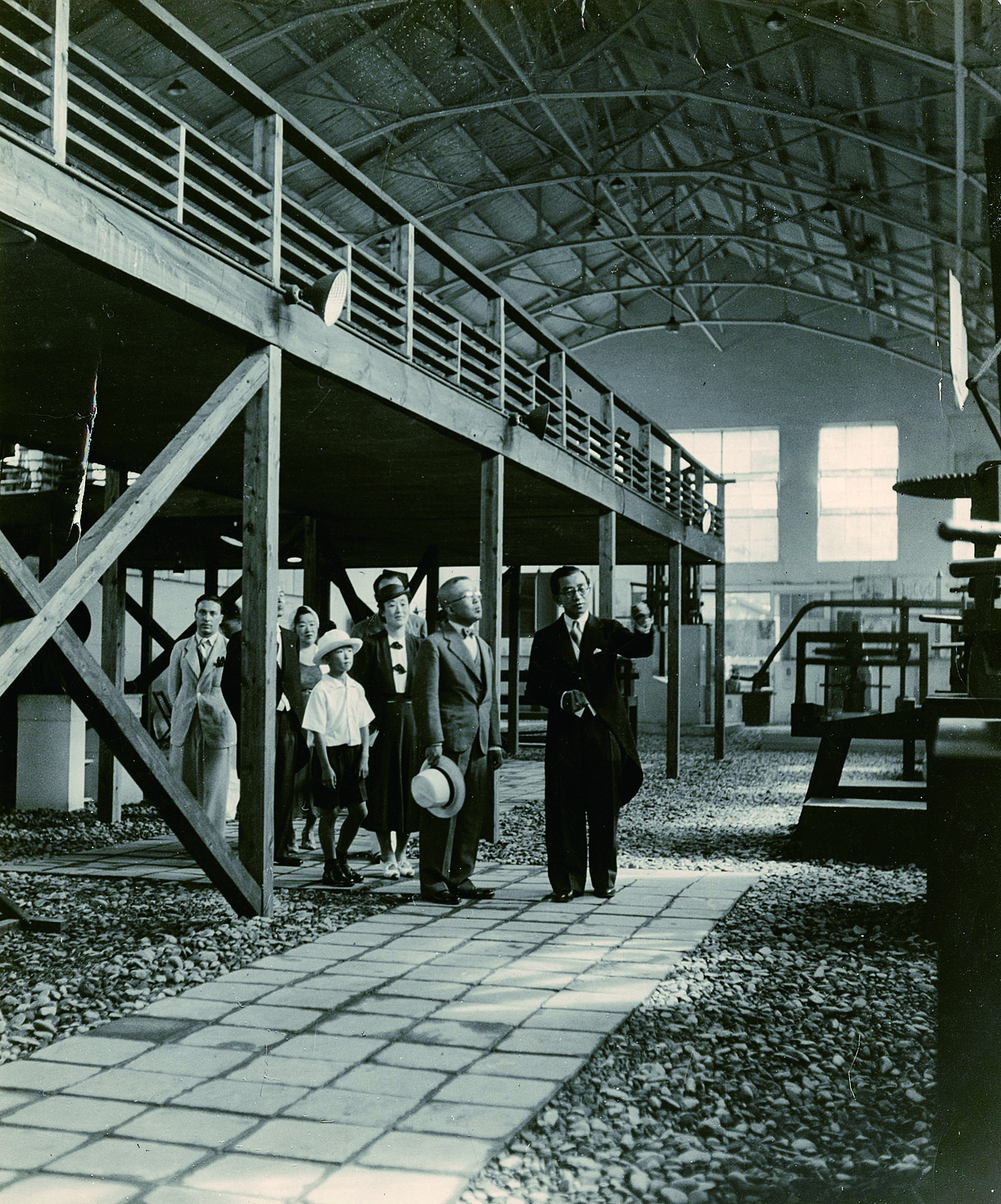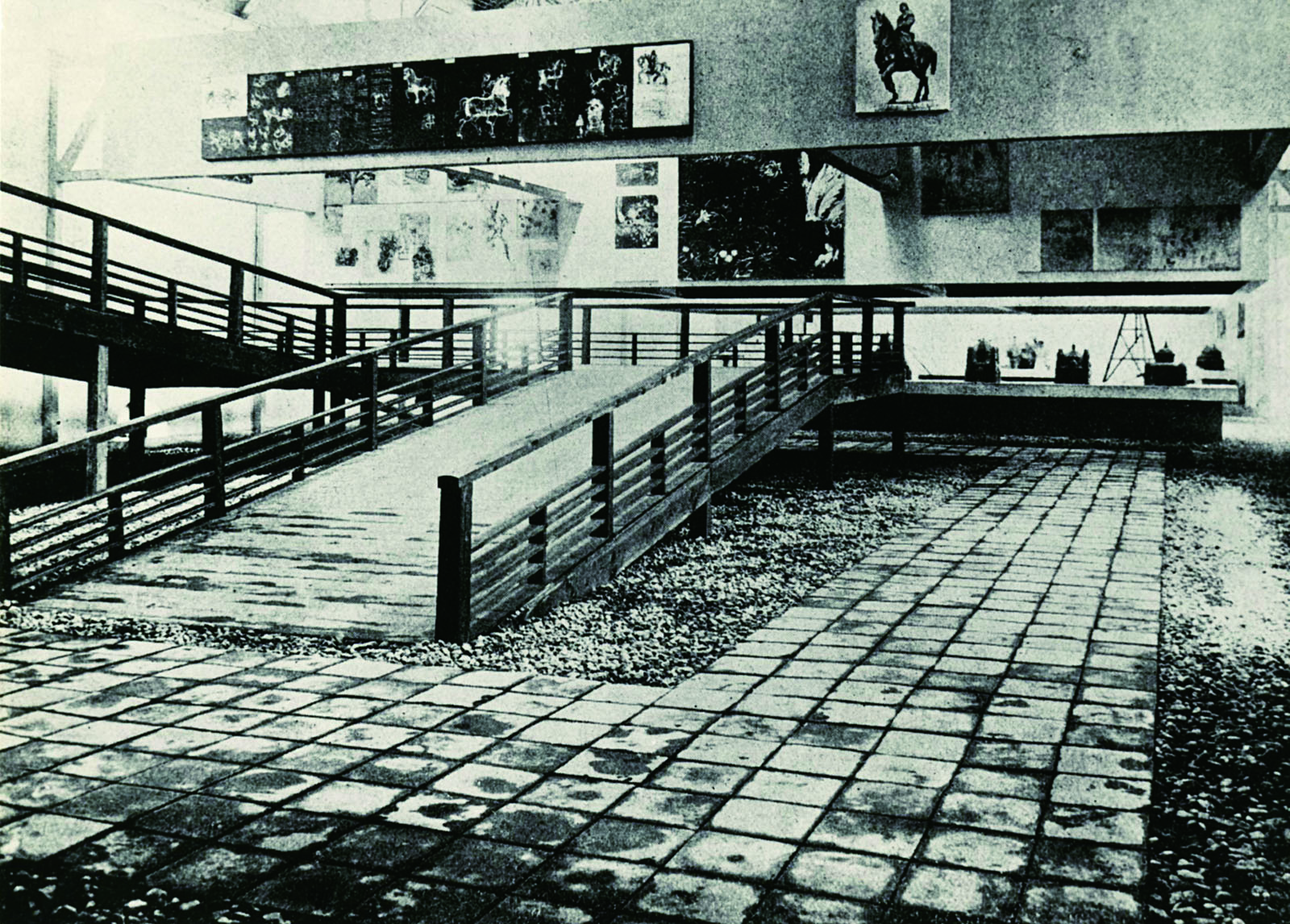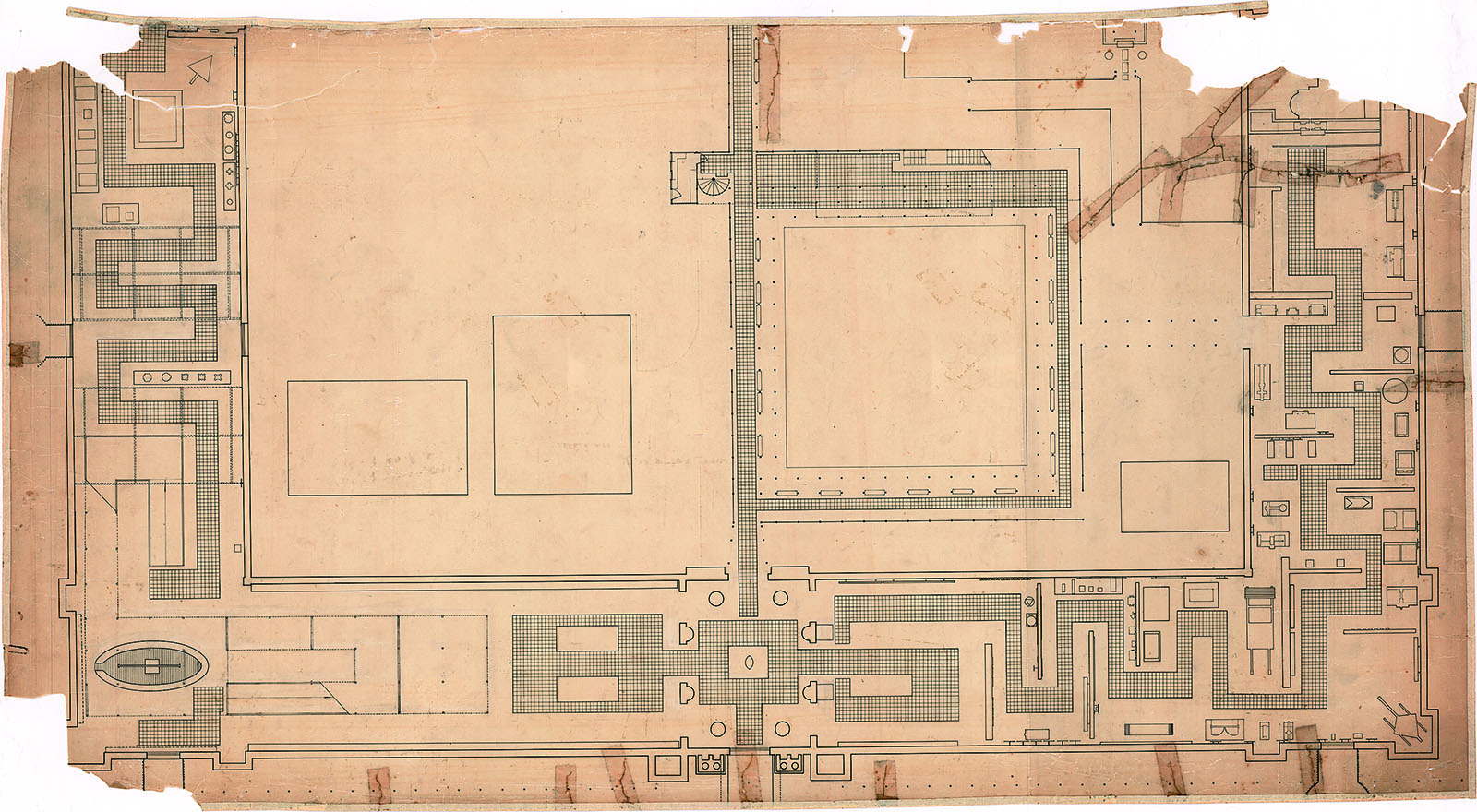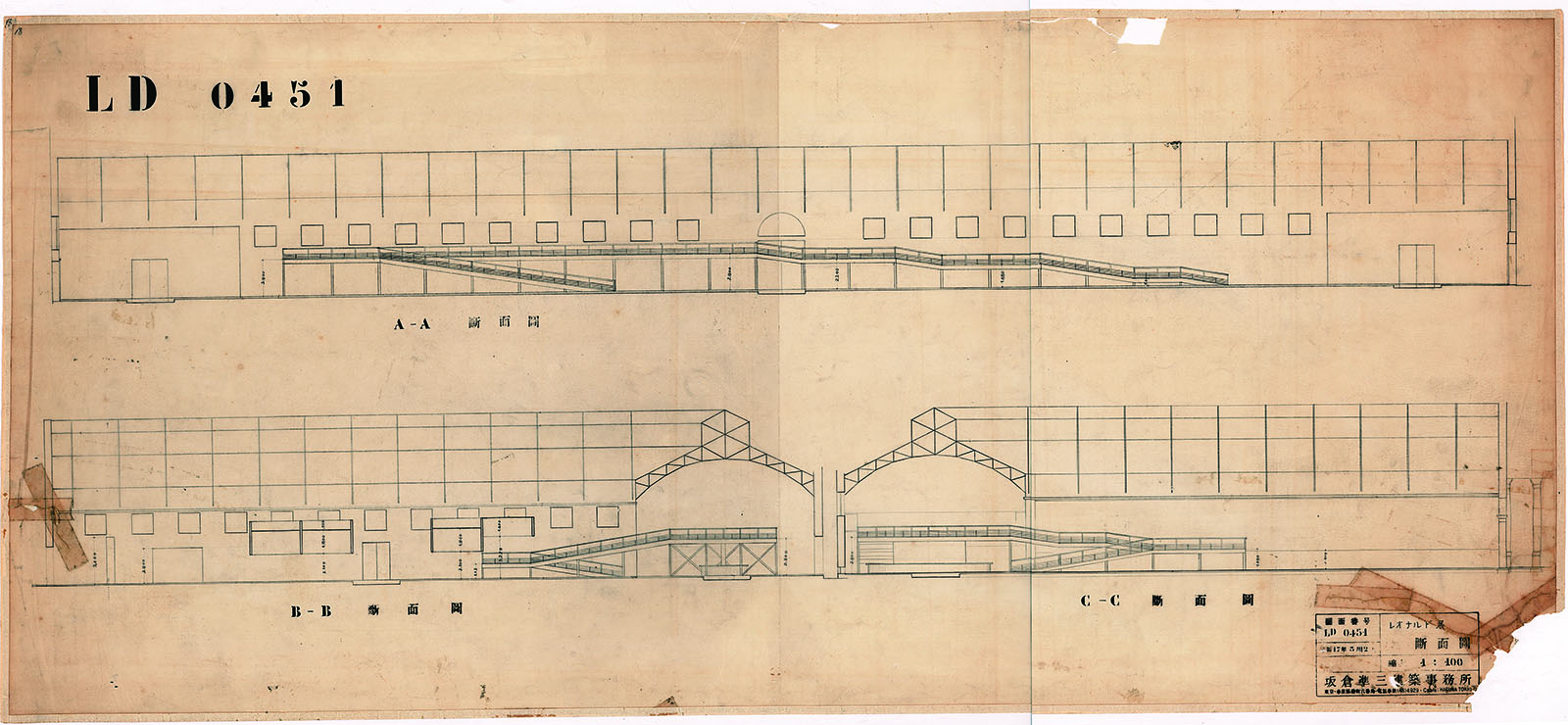レオナルド・ダ・ヴィンチ展
Leonardo da Vinci Exhibition
- 施工年
- 1942
- 設計者
- 坂倉準三
Sakakura Junzo
- 所在地
- 東京都 東京都市
Taito, Tokyo
- 公開の有無
- 公開
- 解説
上野、池之端産業館で開催された展覧会の会場設計。ロの字形平面の産業館内部の砂利床にコンクリートブロックを敷き並べて観覧通路とする。また伸びやかなスロープを設けた木造の櫓状のギャラリー、中庭には休憩所となる茶店を配置するなど、立体的で変化に富んだ回遊式の展示空間が形づくられている。同展は、1939年ファシスト党政権下のイタリアで開催された展覧会がニューヨーク万国博覧会を経て巡回したものであり、日本展では冠に「アジア復興」の文字が付加された。主催はスメラクラブの小島威彦が組織する日本世界文化復興会であり、東洋文化高揚の象徴的な存在としてダ・ヴィンチを置こうとする戦時下の政治的思惑が反映された性格のものであったが、その展示空間には、科学・芸術・歴史の一体性を表現する場としての近代美術館に接続するアイデアを見ることができる。[EK]
Shown here is the exhibition design for “Leonardo da Vinci Exhibition” at Ikenohata Sangyokan in Ueno. The exhibition route was paved with concrete blocks installed on top of the gravel flooring inside the Sangyokan, which was built around a large central courtyard. The design of the gallery included a tea house in the courtyard and a sloped path supported by a timber frame structure, which allowed the viewer to see the exhibit items displayed at various heights. Sakakura created a dynamic space with moments for different viewing experiences. This touring exhibition opened in Italy under the rule of the National Fascist Party in 1939 and came to Japan by way of the 1939 New York World’s Fair. Upon its opening in Japan, a subtitle “Restoration of Asia” was added. It was organized by the Nihon Sekai Bunka Fukkokai led by Kojima Takehiko of Sumer Club, who saw Leonardo da Vinci as a symbolic figure for the promotion of Eastern culture. Although the exhibition had the tone of a political event in time of war, it also reflected Sakakura’s perspective on a modern museum design, a place to present science, art, and history as a whole. [EK]
-

会場風景
Scene of the venue
-

会場風景
Scene of the venue
-

平面図|1:100|−|インク、トレーシングペーパー|655×1220
Plan|1:100|−|ink on tracing paper|655 × 1220
-

断面図|1:100|1942|鉛筆、インク、トレーシングペーパー|545×1190
Section|1:100|1942|pencil and ink on tracing paper|545 × 1190
No Comments